- Home
- Gary Paulsen
The Rifle
The Rifle Read online
Contents
* * *
Title Page
Contents
Copyright
Dedication
The Weapon
The Boy
The Joining
The Rifle
Reader Chat Page
About the Author
Copyright © 1995 by Gary Paulsen
Reader’s Guide copyright © 2006 by Harcourt, Inc.
All rights reserved. No part of this publication may be reproduced or transmitted in any form or by any means, electronic or mechanical, including photocopy, recording, or any information storage and retrieval system, without permission in writing from the publisher.
For information about permission to reproduce selections from this book, write to [email protected] or to Permissions, Houghton Mifflin Harcourt Publishing Company, 3 Park Avenue, 19th Floor, New York, New York 10016.
www.hmhco.com
The Library of Congress has cataloged the print edition as follows:
Paulsen, Gary.
The rifle/Gary Paulsen.
p. cm.
Summary: A priceless, handcrafted rifle, fired throughout the American Revolution, is passed down through the years until it fires on a fateful Christmas Eve of 1994.
[1. Rifles—Fiction. 2. United States—History—Revolution, 1775–1783—Fiction.] I. Title.
PZ7.P2843Rh 2006
[Fic]—dc22 2006041105
ISBN: 978-0-15-292880-3 hardcover
ISBN: 978-0-15-205839-5 paperback
eISBN 978-0-544-87332-2
v1.0316
Dedicated to
The memory of
Scott Barrett
The Weapon
It is necessary to know this rifle.
In 1768, west of Philadelphia, a man named Cornish McManus established a new gunsmithing business. He was thirty-five years old and had been an apprentice and then an assistant to a master gunsmith named John Waynewright for nearly fourteen years. Waynewright had spent much of his life perfecting the concept of rifling—putting a set of spiral grooves down the bore of a rifle to spin and thereby stabilize the patched ball as it sped on its way—and it was said that his rifling was unique. He used a twist of one turn in forty inches, slightly faster than others who made rifled barrels, and this slight increase made the ball spin faster and become more stable, or fixed, on its trajectory.
Because rifling of a bore was, historically speaking, a relatively new concept—less than a century old—most rifles were not as accurate as they could be. But compared to smoothbore guns, which were most decidedly not accurate and allowed balls to wobble to the side and actually take off in a curved trajectory, rifles were an enormous improvement.
But within the field of rifling there was wide variance. Some rifles were not as accurate as others; their accuracy was based on how they were made and who made them. Many were simply utility rifles, good out to fifty or sixty yards—still much better than the smoothbores—and men were happy with that, but now and then . . .
Now and then, with great rarity, there came a blending of steel and wood and brass and a man’s knowledge into one rifle, when it all came together just . . . exactly . . . right and a weapon of such beauty and accuracy was born that it might be actually worshiped.
Such rifles were called “sweet” and were, almost literally, priceless. In that time weapons were much more important than they are now—were, indeed, vital to survival, for putting food on the table, for defense, for life—and a sweet rifle was revered and adored.
What made such a rifle, a sweet rifle, so rare is that even if a gunsmith made one, achieved such a pinnacle of art, there was absolutely no guarantee that he would ever be able to do it again. It was said that a bad gunsmith could never make a sweet rifle but that even a great smith might make only one in his life.
Waynewright was a competent gunsmith and could make serviceable weapons, but he lacked the spark of genius that would make him brilliant. His rifles were plain, functional, dependable, and would never be sweet.
Cornish McManus was something else again. Waynewright often chastened him for daydreaming, for spending too much time on a rifle’s form or finish, for wasting more time on silly sketches of new shapes for stocks or trigger guards—in other words, for being artistic.
The truth is that Cornish was an artist, pure and simple; he was that perfect blending of artistic thinking and force of hand that it took to make a sweet rifle.
Still, it did not come soon. Waynewright held Cornish back as long as the man worked for him. Cornish never got a chance to express himself, and the spark would have died except that in the evenings he spent time drawing on scraps of paper that he hid from Waynewright to avoid ridicule. There were new shapes for rifles, new lines, delicate filigree—all the beauty he wanted to put into his work that Waynewright held back survived in Cornish’s drawings, and when it came time for him to leave and be a journeyman gunsmith, he took the drawings with him.
When he started his new shop near Philadelphia, Cornish was near penniless, and for nearly two years he worked only on bread-and-butter items—repair, retuning rifles and shotguns for hunters, making cheap trade rifles for barter with the Indians—just to get by. As it was, he barely kept his head above water and his artistic abilities were fading, perhaps would have gone altogether except for a piece of wood.
It came with a stack of rough-sawn “blanks”—dry pieces of gun-stock wood crudely hand sawn by a carpenter named Davis specifically to sell to Cornish for use in making rifle stocks. These were blocky pieces of wood only just recognizable as being for gun stocks, and usually they were of plain cherry or walnut and suitable only for rough trade guns.
Except tied in the middle of the bundle was a special piece of wood. It was six feet long, with the grain curved down naturally where the butt, or shoulder piece, came back, and when he pulled it from the bundle it seemed to come alive in his hands. The feeling was so startling that he dropped the blank back on the pile. As he picked it up again he saw that it was a slab of well-dried maple, but this was not uncommon, and it was not until he looked closer that he saw the small marks scattered over the surface of the wood and knew it was a piece of striped or “curly” maple. In the rough-sawn texture they looked almost like blemishes, scars, but he knew them at once as almost classic “bird’s eyes”—tiny knots that would make the wood seem spotted and tiger striped when it was smooth-finished and oiled.
He had never seen so many of the spots and stripes, never seen such a potentially beautiful gun stock, and he decided in that instant he would make a rifle to match the stock, would make the rifle of his dreams and drawings.
And yet it did not happen fast. He still had to live, to eat, and during the days he made trade guns and did repairs and did not work on his special rifle until after the evening meal. Usually it was dark by then and he had to work in candlelight, which slowed him still more, and it was perhaps this reason, the slowness of his work, that caused him to take even more care than he would normally have taken.
Whatever the reason, he lingered over each part of the rifle with a kind of love.
Making the barrel itself took him almost six months of night work. He used his best steel strap and hot-forged it around a .30–caliber tube so that it was forty-two inches long, then bored it out to .40 caliber with a long drill bit. Using such a small bore—.40 inches in diameter—when many rifles and guns were made at .58 and even .75 inches was a change, but in his experience the smaller bore seemed to throw balls with more accuracy, and he wanted this rifle to be not just beautiful but as close to perfectly accurate as he could make it. When the blank barrel was formed and hammer-welded around the bore tube, he removed the tube and trued the barrel with a thin thread lined on all sides and
down the center of the bore to make certain it was straight Trucing: alone took weeks, working late, and when he reached that stage he still did not have a finished barrel but really only one that had started.
By hand he draw-filed the outside of the barrel to have six flat sides, trueing with the thread as he worked so the flats were perfect and equal, and another two months had gone, working in the evenings in the yellow light from the candles.
Fall came and he should have gone hunting to stock up on venison for the winter, but work owned him now and each day he awakened thinking not of what he would do in the day but later, in the yellow light from the tallow candles.
With the barrel formed and the outside filed and hand-buffed, he worked at the rifling, and here again fate stepped in. He had been working with slower twists and he decided with this new rifle he would go with Waynewright’s faster twist of one turn in thirty-five inches. He did not know it but it was the perfect twist for a .40–caliber bore shooting a patched ball with black powder.
The rifling was done with a long wooden rod that had adjustable sharpened steel teeth in a fixture at one end. The rod had a spiral groove down one side that fit into a circular holder, and as the rod was pushed down into the barrel, a small metal peg engaged the groove and caused the rod to rotate as it was pushed.
Ten pushes, until the steel teeth on the rod had made the beginnings of four rifling grooves in the bore of the barrel. Then the teeth were adjusted to cut a tiny bit deeper—little more than scratches at first—and ten more pushes, then adjust, and ten more; two whole weeks of evenings until he held the barrel up to the candle and looked down to see the clean lands and grooves of finished rifling. But not quite, not quite done yet. The metal of the rifling was still slightly rough, with tiny scratches from the cutting teeth, and Cornish used a ramrod and soaked in lard and fine strained sand used for blotting ink, and he polished the bore until it shone like silver—a week’s work.
With the bore done, he threaded one end and screwed in a breech plug with a tang sticking back to attach to the wood and then farther up, along the bottom of the barrel, he made three cross grooves with widened bottoms to hold the metal keys that would affix the rifle to the wood of the stock.
Still the work on the barrel was not finished. Cornish buffed the steel with the fine sand and then finer sand—as fine as flour—running a rag filled with the sand-dust back and forth on the barrel until the flats seemed to be small mirrors that caught the light as he turned the rifle near the candle.
When the steel was shined and cleaned, he set it aside and went to his neighbor, who had a cow for milk, and captured two quarts of the cow’s urine in a wooden bucket. Because of the smell the next step had to be done outside, and he did it the following day, taking a rare day away from his normal work time.
He heated the barrel until it was nearly red, then soaked it with a rag dipped in the urine. The steam that came up almost made him gag, but he knew what finish he wanted and he repeated the process eight times, reheating the barrel each time for a fresh coat of urine, wiping it on with the steaming, stinking, smoking rag, moving it always with the long direction of the barrel until the acids and compounds in the urine had reacted with the hot steel to oxidize it and make it a deep plum-brown color. Satisfied at last that the barrel was dark enough, he let it cool, wiped it with a clean soft rag and then another rag impregnated with refined cooking grease.
The barrel was beautiful. The grease coated and soaked into the color of the steel to make it seem deep and rich, so that he could look into the steel itself, and he wrapped the barrel in a piece of sheepskin with the wool inward and set it on a top shelf of his small shop while he worked on roughing out the stock.
He used small handsaws and chisels to carve the rough shape of the stock. It was the fashion then to have the butt, the part that went back to the shoulder, drop a great deal to give the stock a more elegant curve downward. This was the method used in Europe with guns, and many smiths in the colony copied it, thinking it made for a better weapon. In truth Cornish had found the extra drop to the stock gave the stock a sort of leverage that caused a rifle to bounce slightly up when it was fired, which diminished accuracy, and the recoil slammed backward harder because of the angle.
For this reason he reversed the principle and had the stock only drop half as much as usual. This minimized the kick of the rifle and at the same time held the barrel more steady, and while in itself it would perhaps not have made a difference, this added to the extralong barrel, small bore, and fast-twist rifling all came together to make a unique firearm.
It was still far from finished. The wood had to be grooved to let the three flats of the barrel settle in properly, and he struck a centerline and used a correctly shaped burr—a kind of push-pull chisel—to make the groove. Here he ran into trouble. The maple was seasoned to a rock hardness—some maple was actually called rock maple—and he resharpened the burr many times while cutting. Also the bird’s-eyes were small knots and knots were always harder than the surrounding wood and tended to split at odd angles. Because it was so difficult he worked more slowly, and because of this, when he at last had the groove to match the barrel, he had had such an accurate fit. The barrel seemed wedded to the wood.
Shaping the rest of the stock was more difficult yet. The rigidness of the wood and the hundreds of small knots fought him all the way, forced him to use hand rasps and files to get the curves and shapes he wanted, and when the stock was at last roughed into shape and it was time to fit the lock and trigger to the stock and barrel, he had come to nearly hate the wood for its stubbornness.
The function of a flintlock rifle was simple. Powder would be put down the bore, a patched ball on top of it pressed firmly into position, then in a little place on the lock another small amount of powder ground much finer than the powder in the main charge would be placed below a striking plate in a small cup called the pan. The hammer held a piece of flint in a small vise, and there was a tiny hole drilled from the pan through the side of the barrel into the chamber where the main charge waited. When the hammer was cocked and the striking plate (called a frizzen) placed over the powder, the piece was ready to fire. Pulling the trigger dropped the hammer, the flint struck the frizzen, showering sparks down into the finely ground powder, which detonated and shot a piercing jet of intensely hot flame through the little hole into the main charge which in turn set it off and propelled the ball out of the barrel.
It all sounds very slow-firing but in reality, if it is all done correctly—if the powder is dry and in good shape, if the flint is clean and with a new sharp edge, if the frizzen is wiped dry with the thumb just before firing, if the spring on the hammer is strong and slams the flint hard against the frizzen, and if the powder is positioned correctly in the pan—it is nearly instantaneous. There is no discernible pause from when the trigger is pulled and the rifle fires.
But with a flintlock there are no unimportant parts. The lock, the trigger, the position of the lock and the pan against the barrel, the strength of the springs, the speed of the hammer fall, the crispness of the let-off of the trigger—every single thing matters or the rifle will not fire correctly and, even if it somehow does, it will miss.
Since missing can mean starving or even death, no shortcuts can be taken, and Cornish went to work each night with a quiet intensity that often left him with a headache and pain in back of his eyes from squinting in the dim light from the candles.
He worked on the lock, hand filing the shape and tempering the springs, night after night until it fit perfectly in the inletted side of the stock and nestled snugly against the barrel.
The hammer he shaped with a serpentine jaw at the end to hold the flint and positioned the jaw so that it held the flint at a slight back angle from the frizzen, so that when it struck it also scraped and added to the number of sparks.
By shaping the top of the trigger in a flattened manner, he made it not to have movement. When the trigger was pulled there was an even hardnes
s to it—he estimated three pounds—and then suddenly it let off and the hammer dropped with nothing seeming to have moved at all.
He used finely polished brass for the butt plate—ornately curved to cup the shoulder—and the patch box on the side of the butt and on the keys that held the barrel to the wood as well as the cap at the end of the wood and barrel to join them with an opening for the hole that ran beneath the barrel groove to hold the hickory ramrod. When it was all fitted and joined, he spent a month of nights smoothing the wood to a marble finish and polishing the brass until it shone like gold, and finally he rubbed warmed beeswax into the wood of the stock until the grain and the bird’s-eyes seemed to jump out of the wood.
The last thing he did was to drill the tiny hole from the pan through the side of the barrel for the jet of flame to light the main charge.
And the rifle was done. It was easily the most beautiful rifle he had ever made and he thought, trying to be objective, that it might be the most beautiful rifle he had ever seen. He carefully placed it on wooden pegs covered with bits of lamb’s wool over his workbench so he could see it as he worked on trade guns and repairs. Many who came to the shop saw the rifle and admired it and offered to buy it, but he was too close to it and thought it would be like selling an infant or somebody he loved, so he held back—though he could use the money because he had decided it was time to take a wife.
Besides, there remained the final test, the firing of the rifle, and strangely he was reluctant to do this, hesitated almost in a kind of fear that he would find some flaw. If it did not shoot straight, then it did not matter how beautiful it was—a rifle must work, must deliver the ball to the right place or it was worthless.
But there came a day, an afternoon when his work was caught up as much as it would ever be and the sun was high and there was no wind, a beautiful summer day, and he decided to try the rifle.

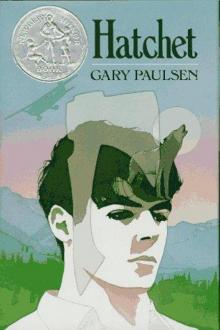 Hatchet br-1
Hatchet br-1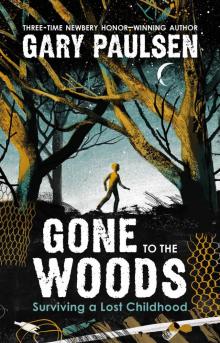 Gone to the Woods
Gone to the Woods How to Train Your Dad
How to Train Your Dad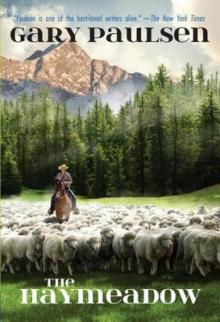 The Haymeadow
The Haymeadow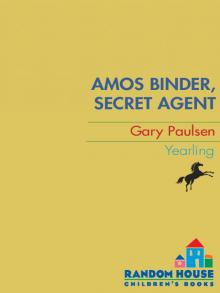 Amos Binder, Secret Agent
Amos Binder, Secret Agent The River br-2
The River br-2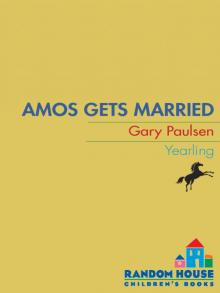 Amos Gets Married
Amos Gets Married Father Water, Mother Woods
Father Water, Mother Woods Dunc and the Scam Artists
Dunc and the Scam Artists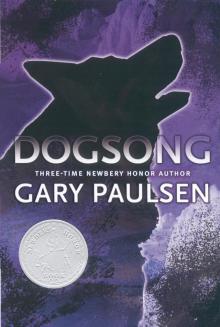 Dogsong
Dogsong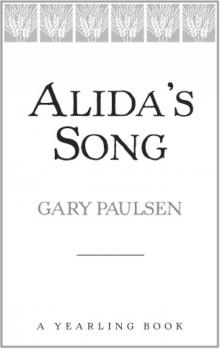 Alida's Song
Alida's Song The Wild Culpepper Cruise
The Wild Culpepper Cruise Brian's Hunt
Brian's Hunt Woods Runner
Woods Runner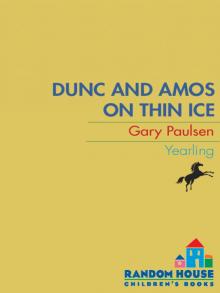 Dunc and Amos on Thin Ice
Dunc and Amos on Thin Ice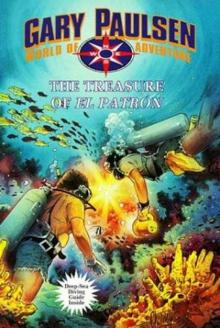 The Treasure of El Patron
The Treasure of El Patron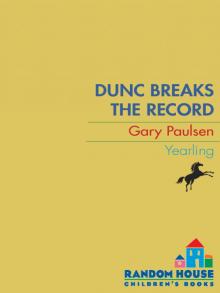 Dunc Breaks the Record
Dunc Breaks the Record Harris and Me
Harris and Me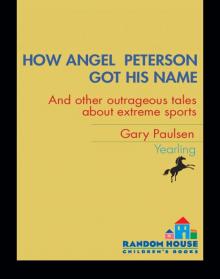 How Angel Peterson Got His Name
How Angel Peterson Got His Name My Life in Dog Years
My Life in Dog Years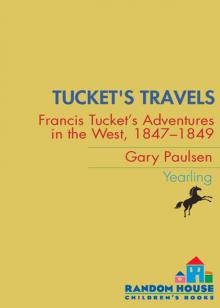 Tucket's Travels
Tucket's Travels Canyons
Canyons Dunc and the Flaming Ghost
Dunc and the Flaming Ghost The Schernoff Discoveries
The Schernoff Discoveries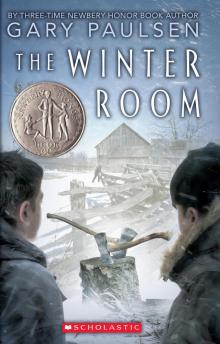 The Winter Room
The Winter Room Road Trip
Road Trip Masters of Disaster
Masters of Disaster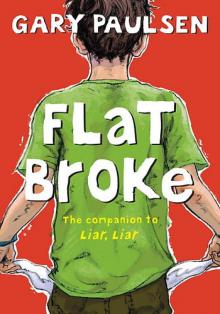 Flat Broke
Flat Broke Dunc and Amos Hit the Big Top
Dunc and Amos Hit the Big Top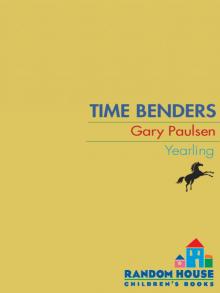 Time Benders
Time Benders Caught by the Sea
Caught by the Sea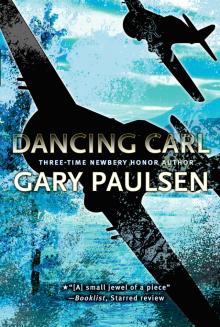 Dancing Carl
Dancing Carl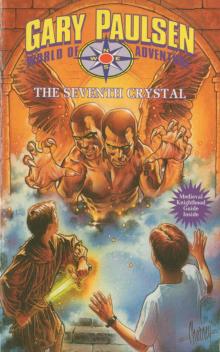 The Seventh Crystal
The Seventh Crystal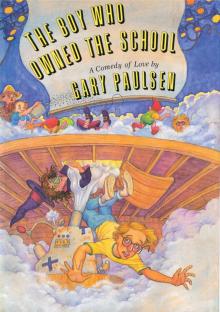 The Boy Who Owned the School
The Boy Who Owned the School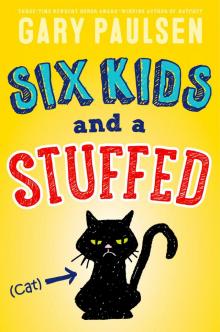 Six Kids and a Stuffed Cat
Six Kids and a Stuffed Cat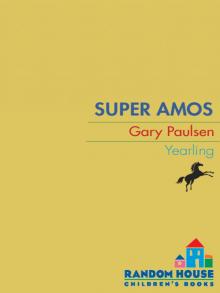 Super Amos
Super Amos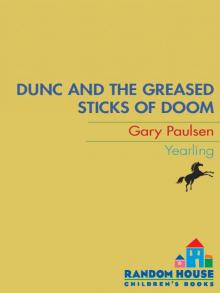 Dunc and the Greased Sticks of Doom
Dunc and the Greased Sticks of Doom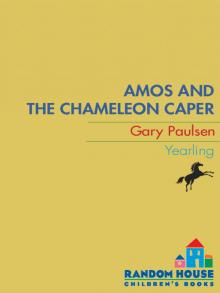 Amos and the Chameleon Caper
Amos and the Chameleon Caper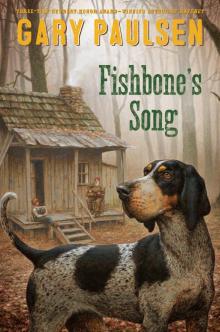 Fishbone's Song
Fishbone's Song Curse of the Ruins
Curse of the Ruins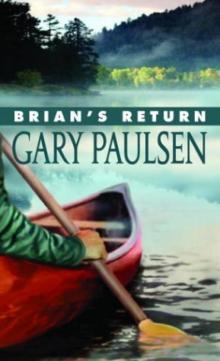 Brian's Return br-4
Brian's Return br-4 Molly McGinty Has a Really Good Day
Molly McGinty Has a Really Good Day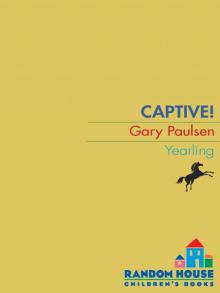 Captive!
Captive! Culpepper's Cannon
Culpepper's Cannon The Car
The Car Puppies, Dogs, and Blue Northers
Puppies, Dogs, and Blue Northers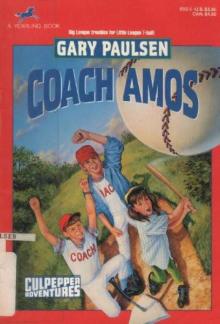 Coach Amos
Coach Amos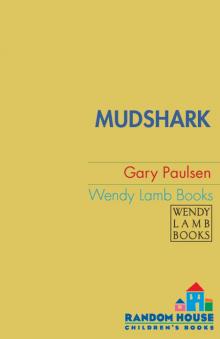 Mudshark
Mudshark The White Fox Chronicles
The White Fox Chronicles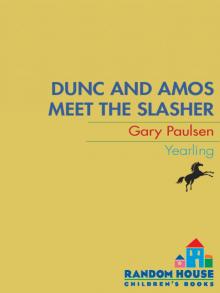 Dunc and Amos Meet the Slasher
Dunc and Amos Meet the Slasher Field Trip
Field Trip The Cookcamp
The Cookcamp Crush
Crush Lawn Boy Returns
Lawn Boy Returns Liar, Liar k-1
Liar, Liar k-1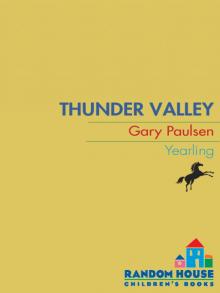 Thunder Valley
Thunder Valley The Tent
The Tent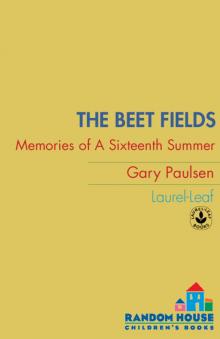 The Beet Fields
The Beet Fields The Creature of Black Water Lake
The Creature of Black Water Lake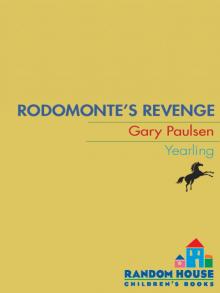 Rodomonte's Revenge
Rodomonte's Revenge Guts
Guts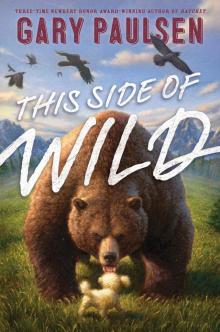 This Side of Wild
This Side of Wild The Rifle
The Rifle The Time Hackers
The Time Hackers Amos Goes Bananas
Amos Goes Bananas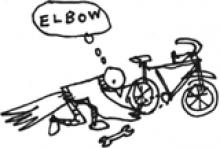 The Amazing Life of Birds
The Amazing Life of Birds Dunc's Undercover Christmas
Dunc's Undercover Christmas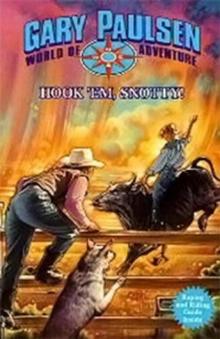 Hook 'Em Snotty
Hook 'Em Snotty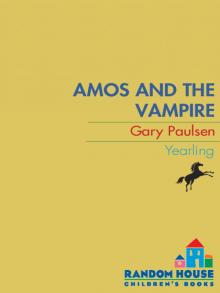 Amos and the Vampire
Amos and the Vampire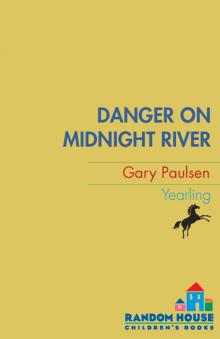 Danger on Midnight River
Danger on Midnight River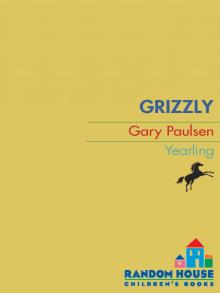 Grizzly
Grizzly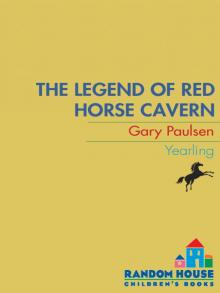 The Legend of Red Horse Cavern
The Legend of Red Horse Cavern The Transall Saga
The Transall Saga Lawn Boy
Lawn Boy The Case of Dunc's Doll
The Case of Dunc's Doll A Christmas Sonata
A Christmas Sonata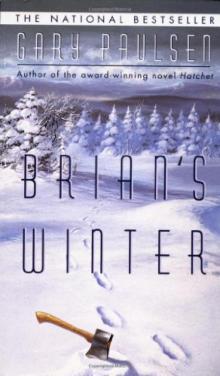 Brian's Winter br-3
Brian's Winter br-3 Vote
Vote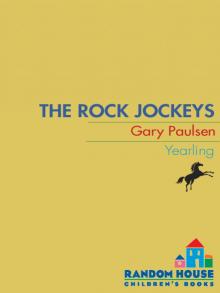 The Rock Jockeys
The Rock Jockeys Nightjohn
Nightjohn Escape from Fire Mountain
Escape from Fire Mountain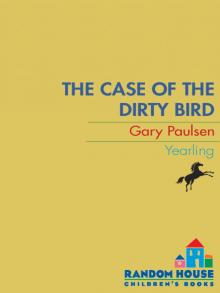 The Case of the Dirty Bird
The Case of the Dirty Bird Brian's Winter
Brian's Winter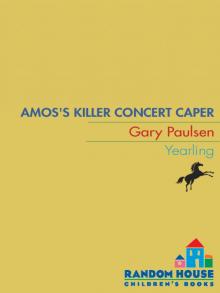 Amos's Killer Concert Caper
Amos's Killer Concert Caper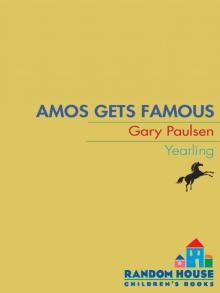 Amos Gets Famous
Amos Gets Famous Brian's Return
Brian's Return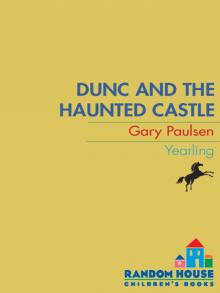 Dunc and the Haunted Castle
Dunc and the Haunted Castle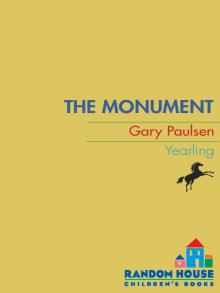 The Monument
The Monument Dunc and Amos Go to the Dogs
Dunc and Amos Go to the Dogs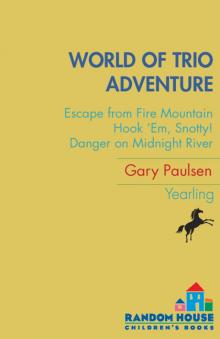 World of Adventure Trio
World of Adventure Trio Amos and the Alien
Amos and the Alien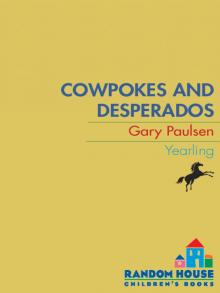 Cowpokes and Desperadoes
Cowpokes and Desperadoes Dunc and Amos and the Red Tattoos
Dunc and Amos and the Red Tattoos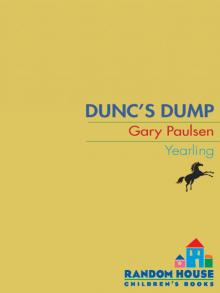 Dunc's Dump
Dunc's Dump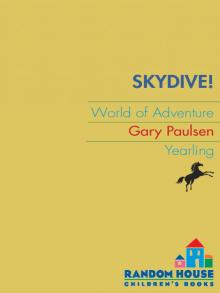 Skydive
Skydive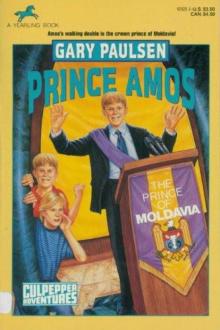 Prince Amos
Prince Amos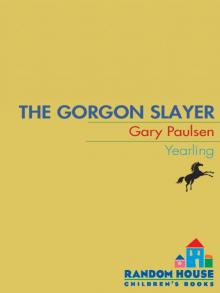 The Gorgon Slayer
The Gorgon Slayer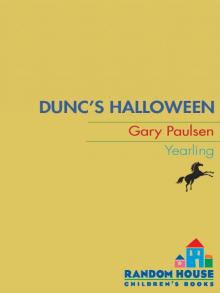 Dunc's Halloween
Dunc's Halloween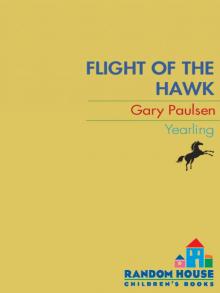 Flight of the Hawk
Flight of the Hawk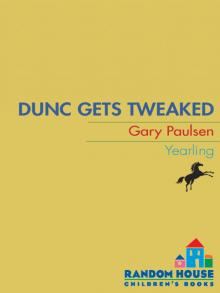 Dunc Gets Tweaked
Dunc Gets Tweaked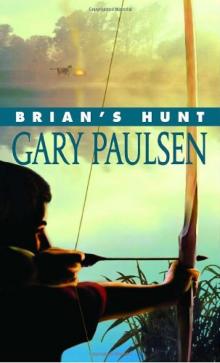 Brian's Hunt br-5
Brian's Hunt br-5 The Night the White Deer Died
The Night the White Deer Died